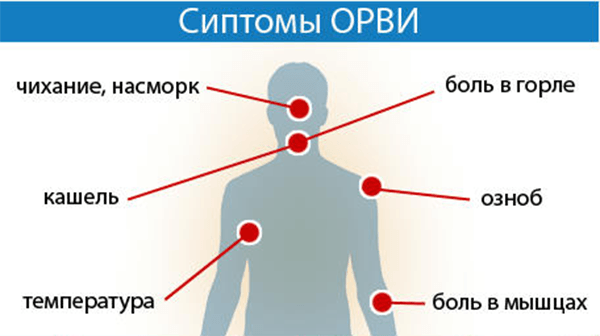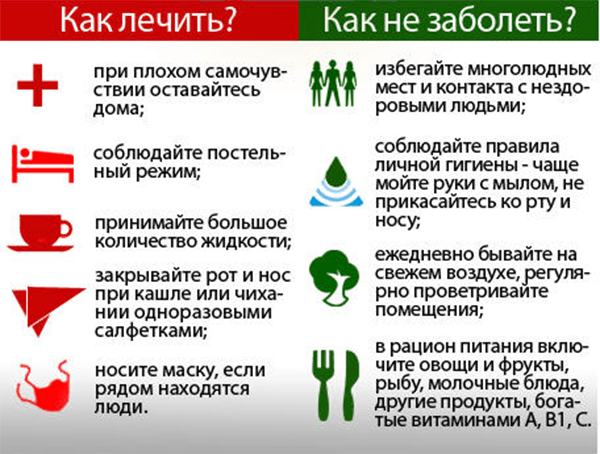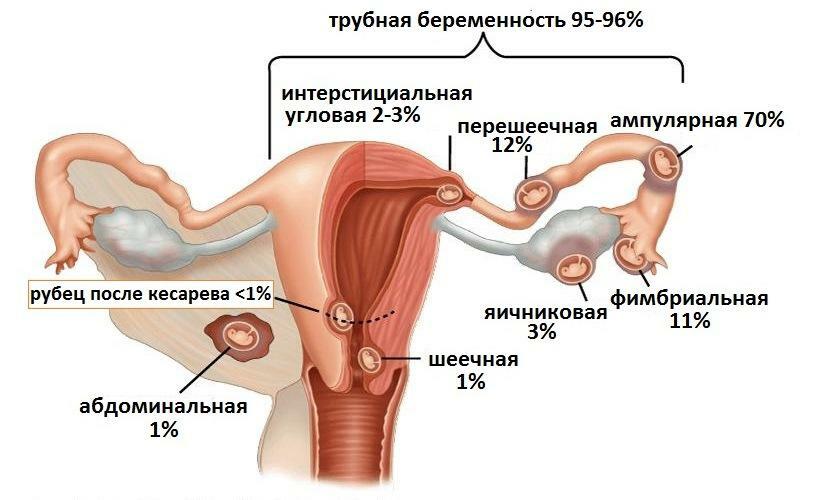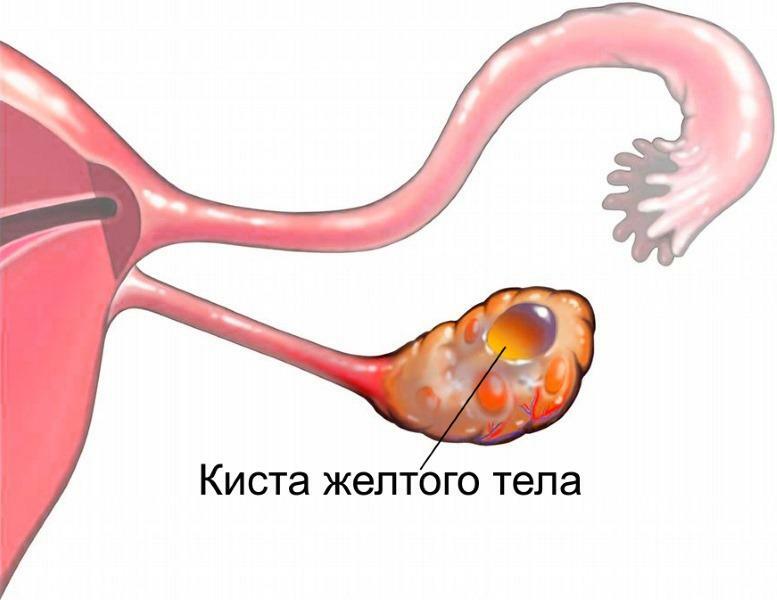ARVI, or acute respiratory viral infections, are a group of diseases with similar symptoms. They affect predominantly the organs of the respiratory system and develop after the virus enters the body. A group of dangerous for human RNA and DNA containing pathogens has more than 200 species.
Take note! Although it is usual to call any "cold" disease to the ARVI, such a diagnosis will be correct only after being exposed by an expert. After all, the viral nature of the problem should be determined by analysis, otherwise the cause of the disease may be in acute respiratory disease, which has similar symptoms. Treatment, which can give a significant effect, in the case of ARI and SARS should be different.

Signs of acute respiratory viral infection in adults
The peak incidence of acute respiratory viral infections occurs in winter, and the frequency of the disease in spring and autumn is also typical. In the first case, the infection is susceptible to a weakened and insufficiently vitamin-rich organism, in the second, a decrease in immunity and susceptibility to diseases increase with hypothermia. There are also sudden outbreaks of the disease, when it is rapidly spreading in large cities.
Content of the material
- 1 Routes of infection
- 1.1 Video - Symptoms and treatment of acute respiratory viral infection( from 33 minutes)
- 2 Symptoms of the disease
- 2.1 Asymptomatic course of the disease
- 2.2 The most disturbing symptoms
- 3 ARVI and influenza: differences
Ways of infection
Disease begins when inthe organism of the virus-pathogen. The main way of its spread is airborne: the minute particles of the patient's saliva that are ejected from sneezing or coughing are dangerous in the air, so it's enough to stay infected with one person in the same room for infection.
Some viruses have the ability to survive even outside the human body. Such causative agents settle on everyday objects, handrails of public transport, etc. Not washed after contact with the dirty surface of the hand easily lead to infection. Especially easy it occurs, there is a person, without washing his hands, touches the mucous membranes( nose or corner of the eye), providing the virus with the simplest access to the body.
Video - Symptoms and treatment of acute respiratory viral infection( from 33 minutes)
Symptoms of the disease
Symptoms of acute respiratory viral infection differ in each case, but the disease in any case is characterized by a syndrome of general intoxication, which is expressed in a number of signs:
- headaches of a diffuse nature;
- chills;
- various kinds of pain in muscles, joints and bones;
- increasing with time weakness, drowsiness and malaise;
- fever;
- appearance of upper respiratory tract problems.
Take note! The patient's body temperature can reach 38-40 degrees. This effect is a protective measure of the body and is necessary for the maximum effective suppression of the infection. It is recommended to reduce the temperature only in cases when it exceeds the threshold of 38 degrees and its further increase represents a danger to life.

The main symptoms of acute respiratory viral infection
However, some of the cases of infection occur with a body temperature that does not go beyond low-grade values.
The initial stage of acute respiratory viral infection invariably brings with itself catarrhal syndrome:
- is difficult due to nasal congestion;
- abundant formation in the nasal cavities of mucus;
- pain when swallowing;
- Pershing in the oropharynx;
- increased activity of tear glands, pain in the eyes;
- sneezing.
The above problems arise due to inflammation of the tissues of the nasopharynx after penetration into the body of a viral agent and edema of the mucous membranes.

Differences between acute respiratory infections and acute respiratory infections
There is also a problem from the main affected system - respiratory. Usually it is a dry cough, passing into seizures, causing pain in the throat and not accompanied by secretions of phlegm. He speaks about the development in the bronchi and alveolar vesicles of the inflammatory process.
The process is often accompanied by a number of other symptoms:
- sleep disorders;
- by a change in voice and difficulty in speech;
- Fotografia;
- by dizziness;
- nausea, as well as vomiting and gastrointestinal disorders in severe cases;
- enlarged lymph nodes.

Symptoms of acute respiratory infections
The asymptomatic course of the disease
ARVI have an incubation period of about two to three days, when the viruses, having got into the body, actively multiply. At this time, there are no or almost no symptoms of the disease, so a person does not suspect the problem, continuing to spread the infection - this is the cause of global outbreaks of ARVI.
This is up to date! In recent days, experts have detected an increased incidence of atypical ARI flow, in which there is no temperature reaction of the body to the disease.
In order not to miss the moment of infection, to start treatment in time and not to bear the disease on your feet, weakening the infected organism even more, it is important to listen to his signals in addition to temperature changes and not to neglect a timely visit to the doctor.

How to treat and how not to get ARI
The most alarming symptoms of
ARVI can lead to numerous complications of various kinds depending on which organ the progressive infection will spread to. The most common consequences of a neglected infection are pneumonia, tonsillitis, sinusitis and sinusitis.
The fact that the development of pneumonia began, the most eloquent is the sudden deterioration in the patient's well-being, a 39 degree temperature and development of dyspnea.
ARVI is a viral disease, but with untimely treatment, bacterial agents can join the viral agents, which prolongs the course of the disease and increases the risks of complications.
Please note! The fact that a bacterial infection has developed in the body against the background of the disease is indicated by a changed color of discharge from the nose. If the transparent substance has become greenish, the situation has changed for the worse. The same is shown by the coating of glands and tongue of plaque of white color, the appearance of bad breath from the mouth and the formation of small ulcers on the cheeks and tongue.

Methods of prevention of acute respiratory viral infections
ARVI and influenza: differences
Often, cases of acute respiratory viral infections are confused with the flu. This is not surprising, because both infections are very close and have not only an almost identical symptomatology, but also similar pathogens. Nevertheless, there are important reasons to learn how to distinguish them:
| Similarities of acute respiratory viral infection and influenza | Differences between acute respiratory viral infection and influenza |
|---|---|
| Influenza is nothing more than one of the groups of diseases included in the list of acute respiratory viral infections | The difference between influenza and |
| is rarely regarded as a serious threat. Influenza is also rarely perceived as an exceptional event, but of the 2000 viruses that cause it, some pose a particularly serious threat to | . The mass of mutated pathogens, such as swine and avian influenza viruses, are resistant to most types of medications and successfully resisted any therapy until a specialized vaccine is created,of human lives |
| The incubation period of any acute respiratory viral infection lasts up to 2-3 days. | Influenza is characterized by increased infectiousness: due to the ability of viruses from the earat the same time, infected new people are not yet aware of anything, and there are such large outbreaks of the disease |
| Symptoms of influenza and ARVI are similar in general | The flu differs in more severe course of the disease, the condition of the infected can be complicated by sleep disorders and hallucinations |

How to distinguish influenzafrom a cold
With SARS today any person can collide or face. Avoid the disease can be due to preventive measures, a healthy vitamin-rich diet and strong immunity. However, even these measures are not capable of 100% exclude the risk of successful penetration of the virus into the body.
It is important to treat the infection adequately. It is worth sensitively listening to the signals of the body, not counting the malaise and manifestation of symptoms of acute respiratory distress syndrome. Independently to cope with a problem immunity can only after a long struggle, during which you have to stay at home. Timely taking antiviral at times will ease the course of the disease, and will also allow you to not lose time, lying in bed, which so unpleasantly knocks out of the rut.
Visit a doctor if you suspect ARVI or obvious signs of the disease - it's not a waste of time, but a way to put the infection on quickly and effectively. The specialist will appoint a suitable drug complex in a particular case, carry out the necessary tests, determine the group of the causative agent of the disease and help to undergo treatment quickly and without the risk of complications.
Follow these simple tips and stay healthy!



